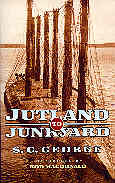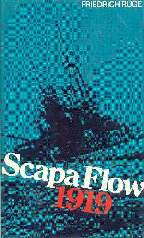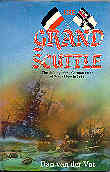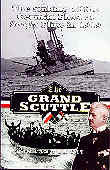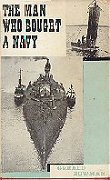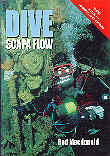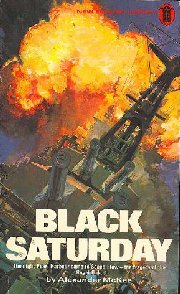| CLASSIC DIVE BOOKS
Wrecks of Scapa Flow |
HOMEPAGE |
|
Please note: The books are listed for interest only, and not offered for sale. |
| At Scapa Flow on 21 June
1919, there occurred an event unique in naval history. The German High
Seas Fleet, one of the most formidable ever built and prime cause of the
Great War, was deliberately. sent to the bottom of the British Grand Fleet's
principal anchorage at Orkney by its own officers and men. The Grand Scuttle
became a folk legend in both Germany and Britain. However, few people are
aware that Rear-Admiral Ludwig von Reuter became the only man in history
to sink his own navy because of a misleading report in a British newspaper;
that the Royal navy guessed his intention but could do nothing to thwart
it; that the sinking produced the last casualties and the last prisoners
of the war; and that fragments of the Kaiser's fleet are probably on the
moon. (From the blurb in The Grand Scuttle).
See also Salvage. |
| THE LOSS OF THE BATTLESHIP
'ROYAL OAK'
In the early hours of Saturday, 14th October, 1939, a few weeks after the outbreak of war, the Royal Navy suffered a stunning loss. The battle- ship Royal Oak, when lying inside the main base of the Home Fleet- Scapa Flow, in the Orkney islands, north of Scotland-was shaken by a number of explosions, occurring at intervals. She became a furnace internally, rolled over and, within about seven minutes of the last explosion, had gone to the bottom, with nearly 800 men trapped inside. Hundreds of others, some of them terribly burned, found themselves swimming in the icy, oil-covered sea, with small chance of immediate rescue-the night was dark and no one had seen or heard the explosions. Jubilantly the German propaganda services claimed the sinking of the Royal Oak and the damaging of the battlecruiser Repulse, and the Ger man public applauded Lieutenant Prien of U.47 as their first hero of the war, the man who had avenged the scuttling of the High Seas Fleet in Scapa Flow after the first world war. Millions of words poured from the world's presses describing the daring feat of arms in which Prien had pene- trated the defences of 'Impregnable Scapa', where every similar attempt during 1914-18 had been defeated. Meanwhile diving operations on the wreck were being carried out under conditions of strictest secrecy and the survivors were forbidden, under any circumstances, to talk to the press. As Alexander McKee began to interview large numbers of men who ha4 escaped from the Royal Oak he found that half of them still did not believe that she had been sunk by torpedoes; he found, too, that German accounts of the operation, including the captured log of U.47, bore hardly any relation to the real facts; and he decided in one way or another, to find out what really did happen that night in Scapa Flow. In the end he succeeded, and all previously published estimates of Prien must now be revised. The events are seen also for what they really were-as part of an intended "Pearl Harbour" for the Royal Navy. Drawing generously upon the wealth of information he has ac- quired Alexander McKee presents a vivid and unforgettable recapitula- tion of those few but fateful hours. As a dramatic documentary Black Saturday stands in a class of its own, deserving scrupulous appraisal. As a grippingly, readable, human story of ordinary men faced with the most frightful horror of naval warfare, it will burn itself into the memory of every reader. (From the fly of 'Black Saturday'). I understand that the Royal Oak is classed as a war grave, and recreational diving is not allowed, except I presume by permission for specific reasons. I was recently advised that fuel oil is still seeping from the tanks. Royal Navy divers lay a Royal Ensign on the date of the anniversary of the sinking as part of the commemoration to her loss. |
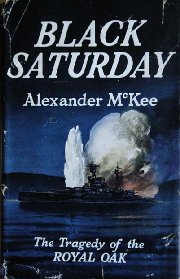 |
BLACK SATURDAY - THE
DEATH OF THE ROYAL OAK
Alexander McKee
|
||
| I SANK THE ROYAL OAK
Gunther Prien. (Kapitän Leutnant Günther Prien) The Grays Inn Press, LOndon. 1954 First English Edition. Translated from the 1940 German original by Comte de la Vatine. Hardcover, dustjacket?; 196 pages with one sketch map and twenty-three b/w photos, plus four pages with three b/w photos. Fp: Kapitän Leutnant Günther Prien. |
|||
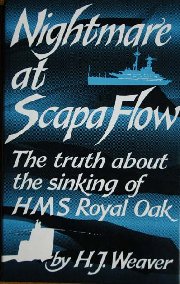 |
NIGHTMARE
AT SCAPA FLOW
The Truth About the Sinking of HMS Royal Oak. H.J.Weaver. |
||
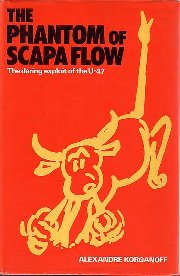 |
THE PHANTOM OF SCAPA FLOW | ||
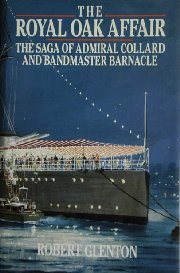 |
THE ROYAL
OAK AFFAIR
The Saga of Admiral Collard and Bandmaster Barnacle. Robert Glenton. |
||
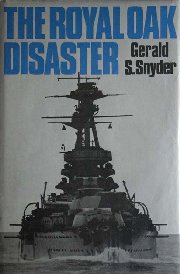 |
THE ROYAL
OAK DISASTER
Gerlad S. Snyder. Presidio Press, USA: 1st US edition 1978. Hard cover, dust wrapper; 240 pages, b&w photos. German submarine U-47 slipped into Scapa Flow and managed to sink the battleship HMS Royal Oak, with the loss of 833 lives - one of the worst disasters of the Royal Navy. Drawing on recently accessible documents, both British and German, the author pieces together the full story whoch had been kept from the public by the British Official Secrets Act. Also draws on contemporary accounts, official reports, handwritten notes of most of the survivors and personal interviews of those involved. |
||
 |
THE ROYAL
OAK COURTS MARTIAL
Leslie Gardiner William Blackwood & Sons London. 1965 First Edition. (Dust jacket far left, with sword). Hardcover, dustjacket.
|
